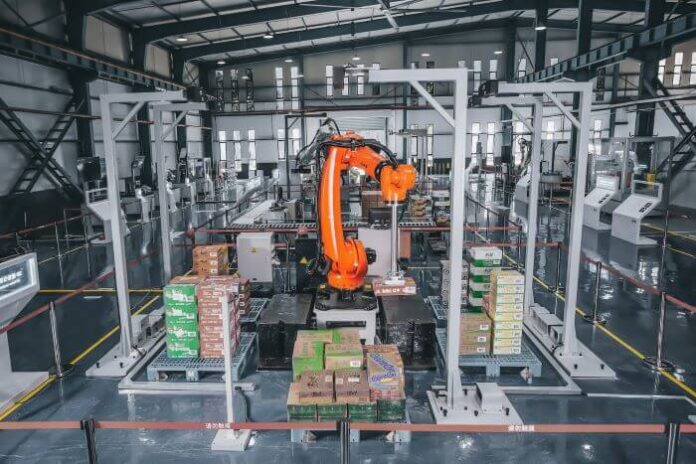The manufacturing sector has been, historically, a significant contributor to environmental challenges. However, the narrative is shifting. Today, with the rise of technological innovations, factories are harnessing sophisticated tools to drive ecological initiatives.
So, in this post, we will be considering some technological innovations factories are employing to promote a better ecosystem.
Resource Optimization and Reduced Waste
When one thinks about factories, images of smokestacks and waste might emerge. Yet, the modern factory looks quite different. At the heart of this transformation lie advanced tools, particularly industrial control systems. These systems offer precise operations, allowing factories to utilize resources to their maximum potential.
By accurately gauging material requirements, factories significantly cut down on waste. Moreover, with accurate monitoring, systems detect inefficiencies instantly, enabling quick rectifications and minimizing resource wastage.
While the initial motivation might have been cost savings, the environmental benefits of such optimization are undeniable. Sophisticated monitoring ensures that raw materials are used efficiently and nothing goes to waste.
Energy Efficiency: From Consumption to Conservation
Historically, factories have been significant power consumers. This not only impacts operational costs but also contributes to a larger carbon footprint. The introduction of smart systems into manufacturing processes has turned the tables. With the ability to monitor real-time energy consumption, these systems optimize machinery operations in factories to help them consume the least amount of power.
The role of predictive maintenance facilitated by advanced systems has also helped greatly in predicting machinery failures. And this has helped factories to address various challenges before they become energy-intensive problems.
With the insights provided, decision-makers can make strategic choices about energy use, harnessing peak times for critical operations and conserving energy during lulls. The cumulative effect of these measures leads to a significant reduction in power consumption, paving the way for a greener manufacturing sector.
Embracing Renewable Energy Sources
Beyond just conserving energy, modern factories are taking strides in the direction of clean energy. Integrating renewable energy into manufacturing operations might seem challenging. But with advanced systems at their disposal, factories are breaking barriers. Solar or wind energy generation, when integrated with advanced monitoring systems, can be optimized for maximum yield.
Factories can store excess energy generated and utilize it during non-peak hours, ensuring continuous operations without relying on non-renewable sources. With data-driven insights, factories can predict energy requirements, aligning them with renewable energy generation patterns. This seamless integration ensures that green energy is not just a supplement but a primary power source.
Advanced Monitoring for Eco-Friendly Factory Standards
Stringent environmental standards compel factories to lean into eco-friendly practices. Meeting these standards demands not just alignment but also vigilant oversight and documentation. High-grade industrial apparatus make this oversight less challenging.
Such apparatus perpetually scrutinizes emissions and waste, ensuring factories operate within set bounds. Should any irregularities surface, notifications get sent out, hence allowing swift corrective measures to avert probable regulatory oversights.
The produced data offers a thorough log, making inspections straightforward and underscoring the factory’s dedication to sustainable endeavors.
Reimagining How Factories Approach Sustainability
Years ago, the idea of sustainability in factories wasn’t so much of a concern – it usually merely comes in as additions or minor adjustments. But with the contemporary factory setting today, the story seems to have changed greatly.
Presently, the environmental focus isn’t an added bonus but is foundational to operational blueprints and actions. Launching fresh manufacturing lines or rejuvenating old ones, ecological parameters get the same emphasis as efficacy and economic viability.
One element driving this fresh perspective is the infusion of intricate tools, including systems designed for industrial control. Such systems provide unmatched insights into manufacturing stages, exposing facets often overlooked in times past.
Factories have the capacity to identify aspects of their operations that either produce undue waste or guzzle excess energy. With this information in hand, these zones undergo design tweaks to mirror eco-friendly objectives more closely.
The eye on sustainability isn’t just periodic. Relentless efforts have been put in place by many factories today to ensure that sustainable actions are not just periodic tasks but a thing of routine. With shifting buyer inclinations and emerging ecological hurdles, factories adjust their functions to resonate with these dynamics.
To distill the point, tools like systems designed for industrial control offer factories a twofold advantage. They foster sustainability and augment market standing, indicating that environmental focus and commercial growth are two sides of the same coin.
Final Thoughts
Factories are currently not just speaking about eco-friendly transitions but also enacting them, steered by technological leaps. The path ahead is dotted with challenges, but with innovations like systems designed for industrial control lighting the path, an eco-conscious manufacturing future looks more like an impending reality than a distant dream.







